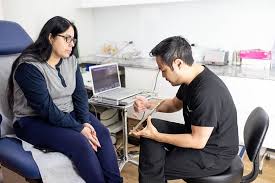Varicose veins, those swollen, twisted veins that are often visible beneath the skin, are a common concern for many individuals. Whether due to genetics, pregnancy, or standing for long periods, varicose veins can affect both men and women. For those who experience pain, discomfort, or aesthetic concerns, seeking professional treatment becomes a priority. However, a common question that arises is: are varicose vein treatments covered by insurance? This question often looms large, as medical procedures can be costly. In this article, we’ll dive into the factors affecting insurance coverage for varicose vein treatments, how insurance companies typically handle these procedures, and what you can expect from vein treatment doctors.
Understanding Varicose Vein Treatments
Before addressing insurance coverage, it’s important to understand the variety of varicose vein treatments available. There are several types of treatments for varicose veins, ranging from non-invasive options to more surgical procedures. Some of the most common treatments include:
- Sclerotherapy: A minimally invasive treatment where a solution is injected into the vein, causing it to collapse and eventually disappear.
- Endovenous Laser Treatment (EVLT): A laser is used to close off the affected veins.
- Radiofrequency Ablation: Similar to EVLT, this method uses heat to seal the vein.
- Vein Stripping and Ligation: A more invasive surgical method that involves removing the affected vein.
Each of these treatments aims to reduce the symptoms of varicose veins, which may include pain, swelling, and skin changes. The decision about which treatment to pursue depends on the severity of the varicose veins and the patient’s overall health.
Are Varicose Vein Treatments Covered by Insurance?
The short answer is: it depends. In many cases, insurance may cover varicose vein treatments if they are deemed medically necessary, but coverage can vary significantly depending on your insurance provider, the specific treatment, and the underlying symptoms you experience.
Medical vs. Cosmetic Treatment
Insurance companies typically differentiate between treatments that are considered medically necessary and those that are deemed cosmetic. If varicose veins are causing significant pain, discomfort, or other health complications, they are more likely to be classified as a medical condition, and the treatment may be covered.
In contrast, if the varicose veins are only a cosmetic concern (for example, they are purely a visual issue with no associated pain), insurance may not cover the procedure. Many people opt for varicose vein treatment primarily for aesthetic reasons, but for insurance to cover the procedure, it generally needs to meet specific medical criteria.
Criteria for Medical Necessity
Insurance providers often look for signs that varicose veins are impacting a patient’s health in some way. Some of the factors that may be considered medically necessary include:
- Pain and discomfort: If varicose veins cause aching, cramping, or discomfort, insurance may consider this medically necessary.
- Ulcers or bleeding: When varicose veins lead to complications like open sores (ulcers) or bleeding, it’s more likely that insurance will approve treatment.
- Swelling: Chronic swelling that doesn’t respond to compression therapy could make the treatment medically necessary.
- Blood clots: In some cases, varicose veins can lead to blood clots, which could increase the need for treatment.
Vein treatment doctors typically assess the severity of the symptoms and may require certain diagnostic tests, such as an ultrasound, to determine the extent of the problem before recommending a treatment. This process helps to establish whether your case meets the criteria for medical necessity.
How to Verify Insurance Coverage
To ensure that you’re not caught off guard by unexpected costs, it’s essential to check with your insurance provider to understand the specifics of your coverage. Here are some steps you can take to verify if your varicose vein treatments will be covered:
- Contact your insurance provider: Before seeking treatment, call your insurance company and ask specifically about varicose vein procedures. Provide them with the details of your situation, including the symptoms you are experiencing.
- Request a pre-authorization: In some cases, insurance companies require pre-authorization for varicose vein treatments. This means that you may need to submit documentation from your vein treatment doctor to prove that the procedure is medically necessary.
- Understand your policy: Review your insurance policy to understand the exclusions, limitations, and coverage for vein treatments. Some policies may offer partial coverage, while others may have full coverage for medically necessary procedures.
- Get a second opinion: If your insurance company initially denies coverage, it may be worth seeking a second opinion from a different vein treatment doctor. Sometimes, a different evaluation may lead to a different determination of medical necessity.
Role of Vein Treatment Doctors
Vein treatment doctors play a crucial role in ensuring that your insurance coverage is maximized for varicose vein treatments. These specialists are trained to evaluate the severity of your varicose veins and determine whether the condition requires medical intervention. A vein doctor will typically conduct an ultrasound to assess the veins’ structure and functioning, which helps determine the best course of treatment.
Furthermore, vein doctors can provide the necessary documentation to prove that the procedure is medically necessary. They will also help navigate the insurance process, guiding you through the paperwork, pre-authorization requirements, and necessary follow-ups to secure coverage for your procedure.
What to Expect from the Treatment Process
If you’re fortunate enough to have insurance coverage for your varicose vein treatment, you’ll likely be guided through the process step by step. Here’s what you can expect:
- Consultation: Your first visit will involve a consultation with a vein treatment doctor. They will assess your symptoms, medical history, and the severity of your varicose veins. They may also perform an ultrasound to get a clearer picture of the veins.
- Pre-Treatment Approval: Once the doctor determines that the procedure is medically necessary, they will likely submit documentation to your insurance company for approval.
- Treatment: After receiving approval (if applicable), the actual treatment can begin. The specific procedure you undergo will depend on the treatment plan created by your doctor.
- Recovery: Most varicose vein treatments are minimally invasive, with little downtime. You may need to wear compression stockings for a period of time to ensure proper healing.
Final Thoughts
In conclusion, are varicose vein treatments covered by insurance? The answer is that it depends on several factors, including the severity of your symptoms and your insurance provider’s policy. Medical necessity is the key criterion that insurance companies use to determine coverage. If your varicose veins cause pain, swelling, or other health issues, there’s a good chance that your treatment may be covered. Always check with your insurance provider and work closely with your vein treatment doctor to ensure the process goes smoothly.
By understanding the ins and outs of insurance coverage for varicose vein treatments, you can make informed decisions about your health and finances.



